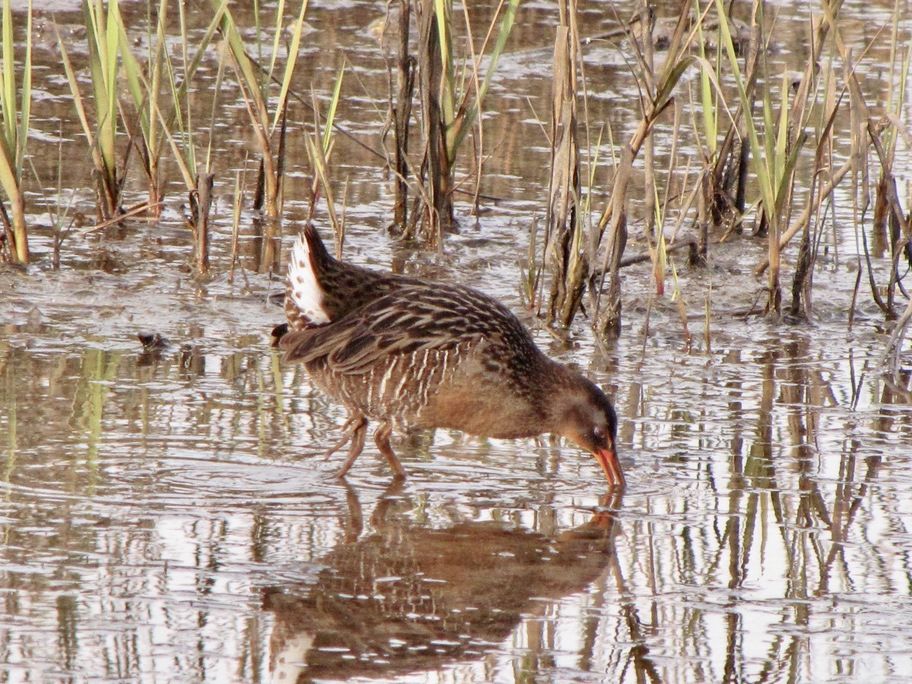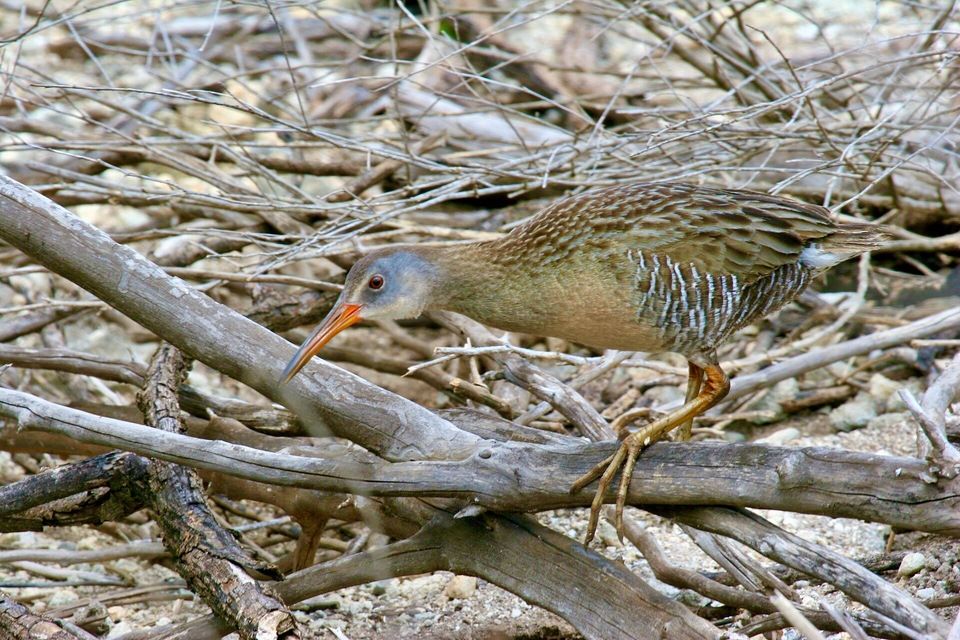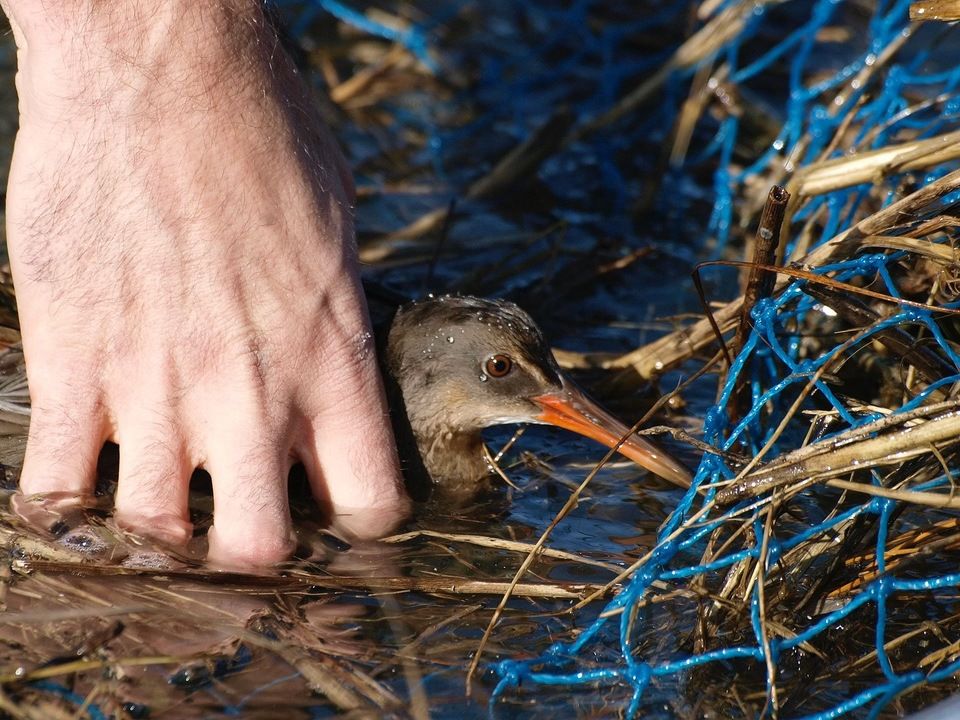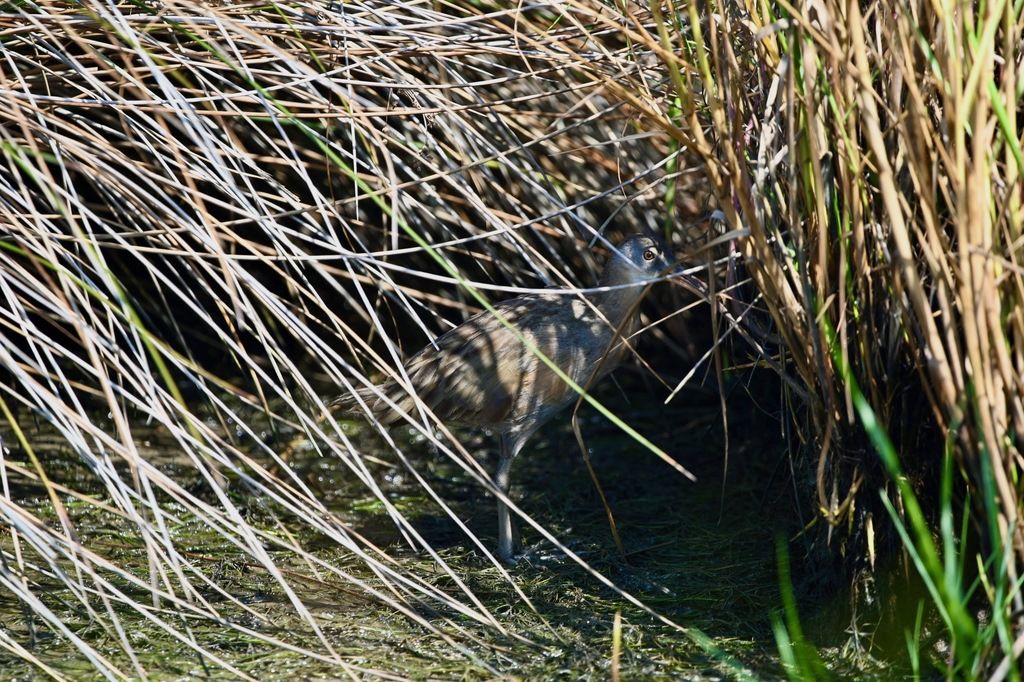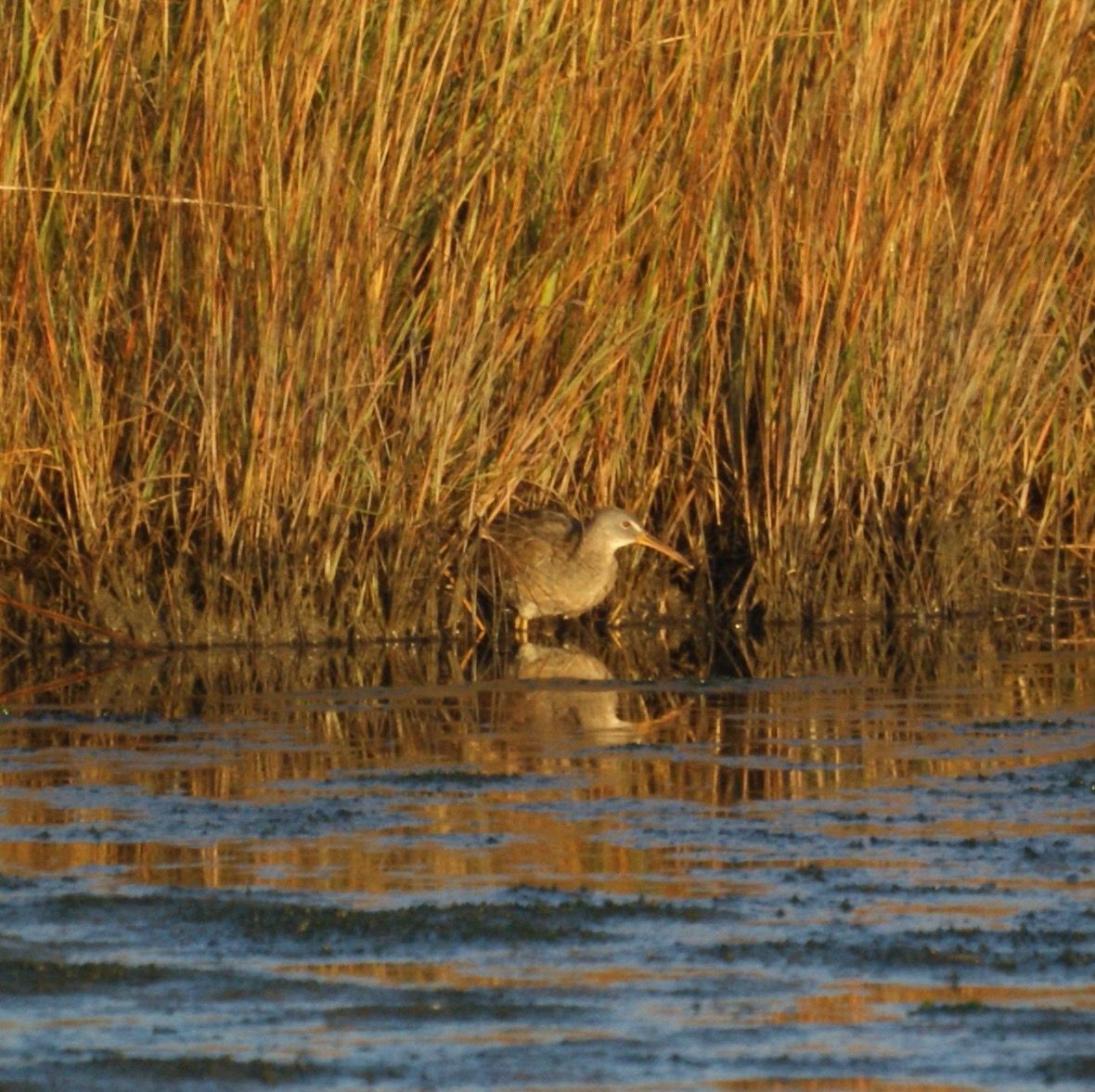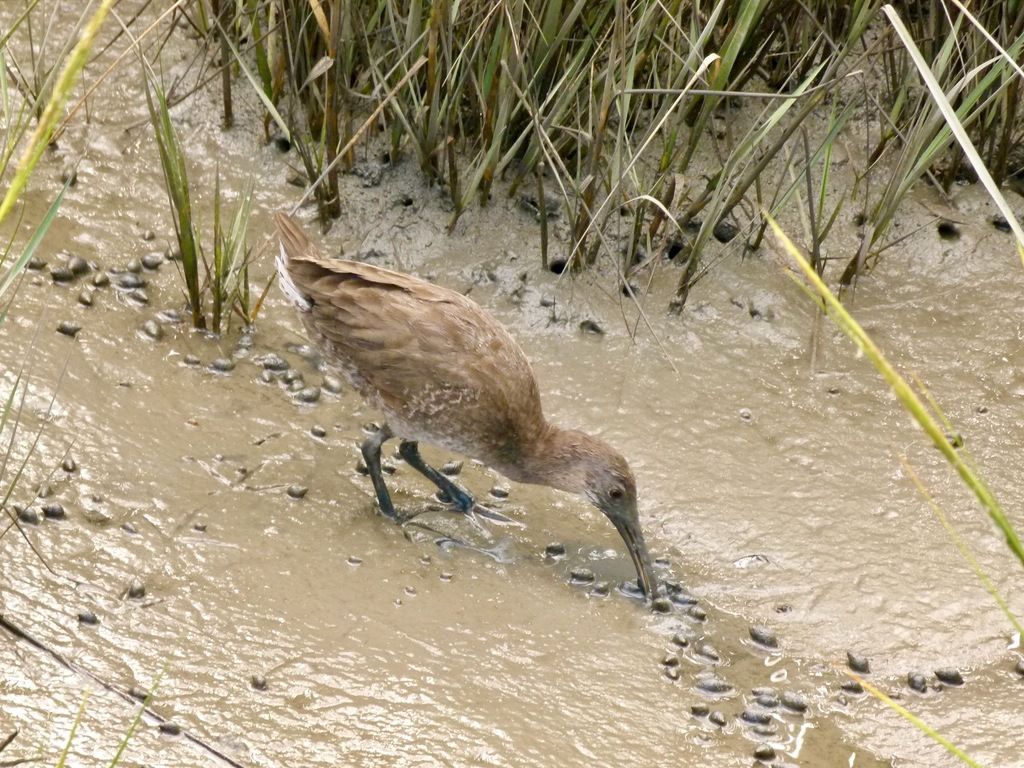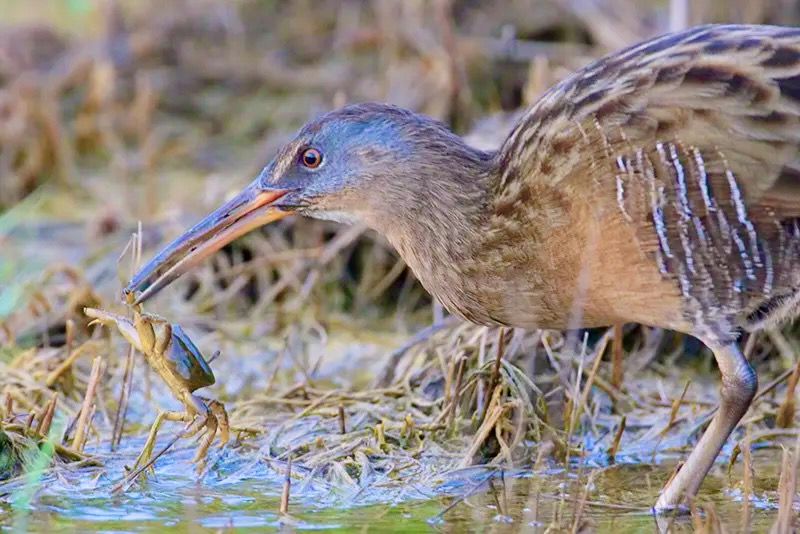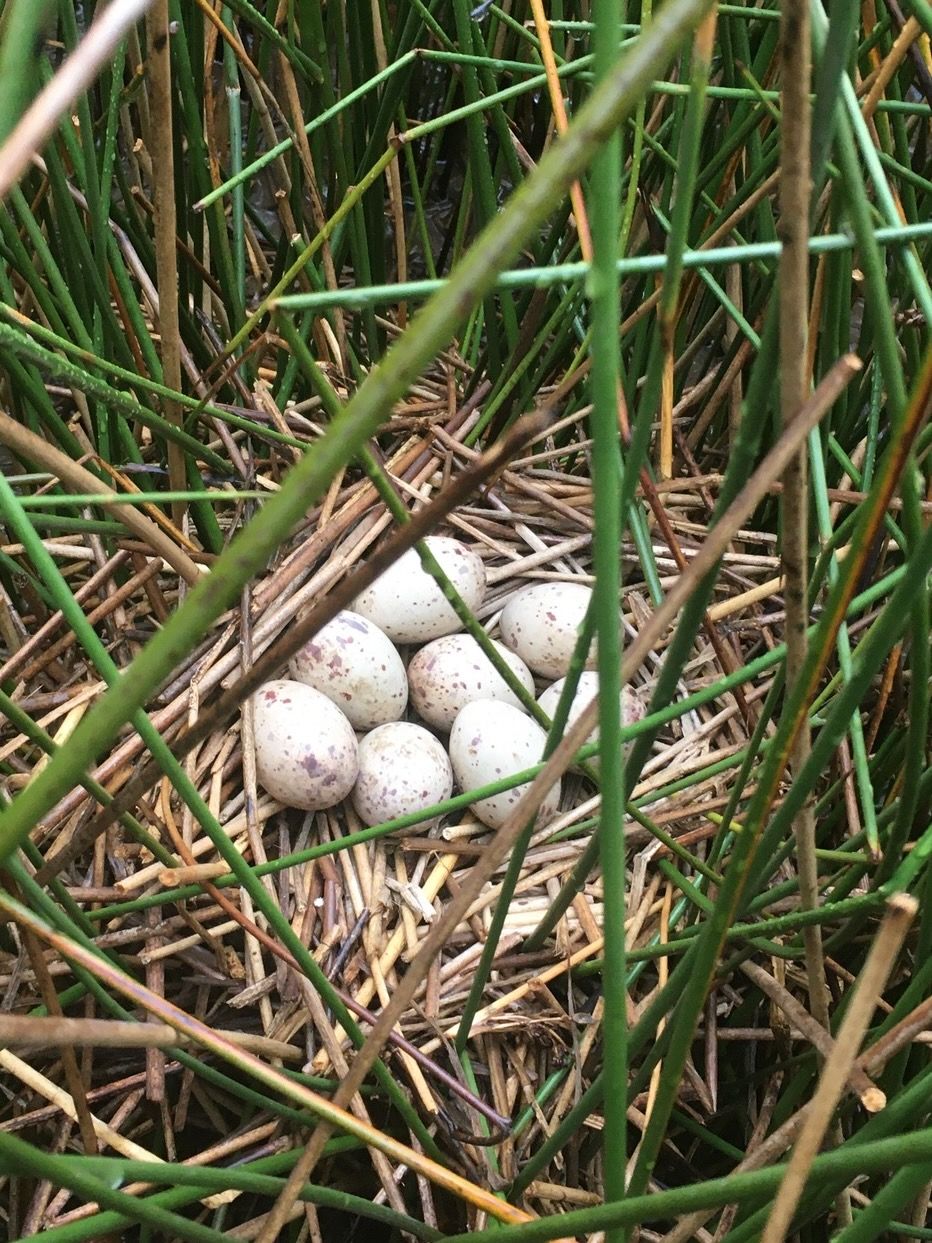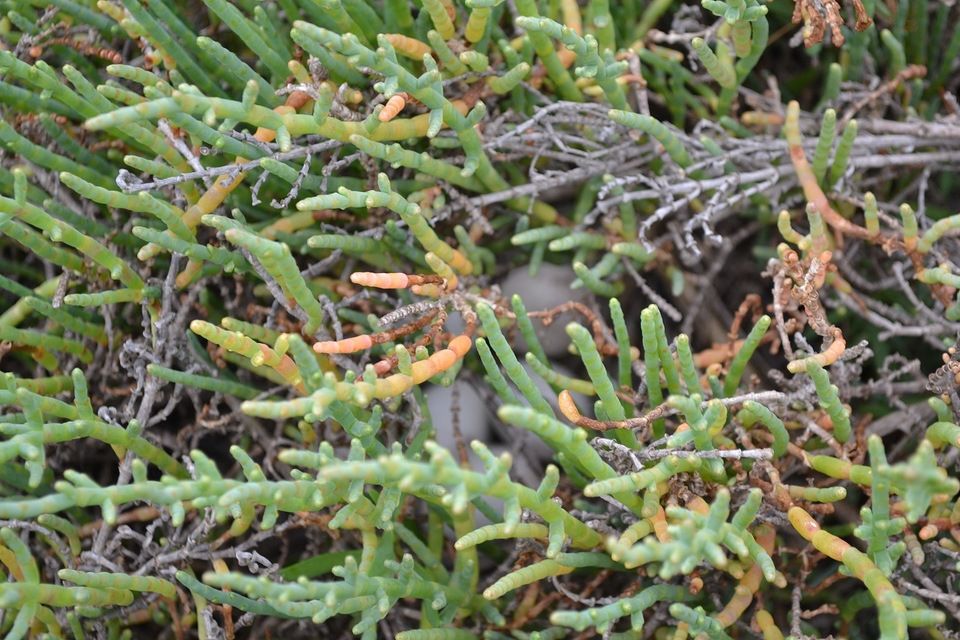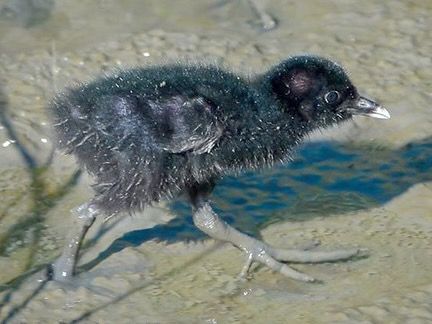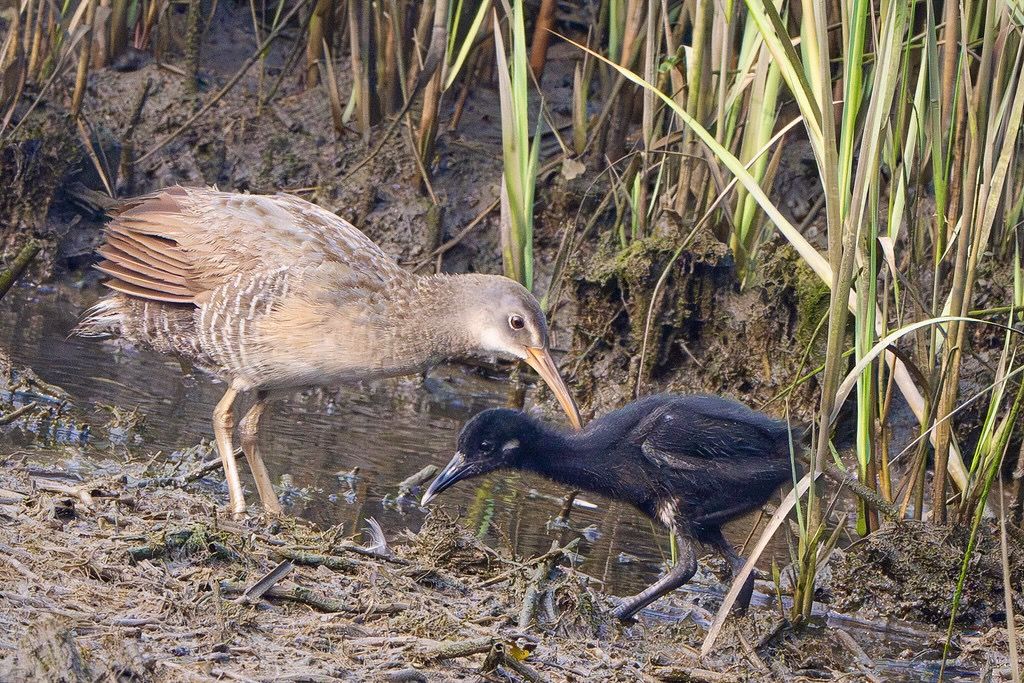Clapper Rail
A Clapper Rail was recorded for the first time at Salter Grove in August 2024 as it rushed to hide in the narrow band of smooth cordgrass lining the shore of Rock Island in South Cove. It was likely a migrant on its way to winter in the salt marshes of southeastern United States.
It has the body of a scrawny chicken with outsized feet. A short stubby tail that is sometimes held vertically reinforces this image and explains its other common name of Marsh Hen. Also called Ghost of the Marsh because it is able to stay well hidden in vegetation despite its relative large size. Its grayish brown plumage and indistinct alternating light and dark dark bars on the belly render it inconspicuous as it moves through dense stands of marsh grass.
Even where it occurs year round and is known to be common, the Clapper Rail is more often heard than seen. Its call is a series of harsh "kek-kek-kek ... kek-kek" notes that varies in pacing and may sometimes trail off. Sightings are usually of individuals emerging from vegetation as they probe for food in exposed mud during low tide with their long bills. It is omnivorous, feeding on small crustaceans and other marine invertebrates, as well as plant matter and seeds. It favors fiddler crabs, often swallowing them whole.
The male uses dead vegetation to build a nest that sits on the ground or on vegetation above the high tide mark. Despite this precaution, eggs are occasionally submerged during high tide--to a depth of 18 inches-- but still manage to hatch. Newly hatched chicks look nothing like their parents. The body is covered with black down that matches the black beak and legs. Both parents take great care of the young, often carrying young chicks on their back during high tide.
The marshy areas at Salter Grove would be insufficient to support this salt marsh specialist for more than just a short visit. It favors the extensive coastal salt marshes that occur in eastern United States, eastern Mexico, northeastern Central America, and the Caribbean.
Southern New England represents the northern limits of a breeding range that has been expanding northwards since 1950. The first observation of breeding was recorded for Rhode Island in 1953 although it was included in a 1884 list of birds shot by a hunter in Newport. The Second Atlas of Breeding Birds in Rhode Island reported an increase in sightings since the First Atlas, but no confirmed breeders.
Like other birds that only occur in salt marshes, the Clapper Rail is vulnerable to coastal development. The rising sea levels due to climate change also pose a danger as shoreline structure is altered and suitable nesting habitat is reduced.
For more information:
https://www.allaboutbirds.org/guide/Clapper_Rail
https://www.audubon.org/field-guide/bird/clapper-rail
https://encyclopediaofalabama.org/article/clapper-rail/
https://edisto.org/clapper-rail/
https://en.wikipedia.org/wiki/Clapper_rail
https://houstonaudubon.org/birding/gallery/clapper-rail.html
Clarkson, C. E., Osenkowski, J. E., Steen, V. A., Duhaime, R. J., and Paton, W.C. (2023) The Second Atlas of Breeding Birds in Rhode Island. Rhode Island Department of Environmental Management Division of Fish and Wildlife. pp. 108-109.
Howe, Jr., R.H. and Sturtevant, E. (1899) The Birds of Rhode Island. p. 89

.jpeg?w=350?blur=10)

